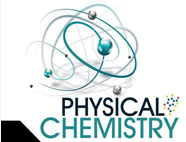


 علم الكيمياء
علم الكيمياء 
 الكيمياء التحليلية
الكيمياء التحليلية 
 الكيمياء الحياتية
الكيمياء الحياتية 
 الكيمياء العضوية
الكيمياء العضوية 
 الكيمياء الفيزيائية
الكيمياء الفيزيائية
 الكيمياء اللاعضوية
الكيمياء اللاعضوية 
 مواضيع اخرى في الكيمياء
مواضيع اخرى في الكيمياء
 الكيمياء الصناعية
الكيمياء الصناعية |
أقرأ أيضاً
التاريخ: 23-10-2020
التاريخ: 2025-01-16
التاريخ: 2023-08-28
التاريخ: 15-5-2017
|
But we can do better than this: we can also work out what sort of chemical environment the carbon atoms are in. All 13C spectra can be divided into four major regions: saturated carbon atoms (0–50 ppm), saturated carbon atoms next to oxygen (50–100 ppm), unsaturated carbon atoms (100–150 ppm), and unsaturated carbon atoms next to oxygen, i.e. C O groups (150 to about 200 ppm).
The spectrum you just saw is in fact that of lactic acid (2-hydroxypropanoic acid). When you turned the last page, you made some lactic acid from glucose in the muscles of your arm—it is the breakdown product from glucose when you do anaerobic exercise. Each of lactic acid’s carbon atoms gives a peak in a different region of the spectrum. But hang on one moment, you may say—don’t we only see signals for carbon-13 nuclei and not carbon-12, which make up most of the carbon atoms in any normal sample of lactic acid? The answer is yes, and indeed only about 1.1% (the natural abundance of 13C) of the C atoms in any sample are ‘visible’ by 13C NMR. But since those 13C atoms will be distributed more or less randomly through the sample, this fact does not affect any of the arguments about the appearance of the spectrum. What it does mean, however, is that 13C NMR is not as sensitive as 1H NMR, for example, where essentially all of the H atoms in the sample will be ‘visible’.



|
|
|
|
تحذير من "عادة" خلال تنظيف اللسان.. خطيرة على القلب
|
|
|
|
|
|
|
دراسة علمية تحذر من علاقات حب "اصطناعية" ؟!
|
|
|
|
|
|
|
العتبة العباسية المقدسة تطلق حفل التكليف الشرعيّ السابع بمشاركة 5 آلاف تلميذة
|
|
|